Review: Samsung Rugby III for AT&T
Mar 21, 2013, 1:59 PM by Eric M. Zeman
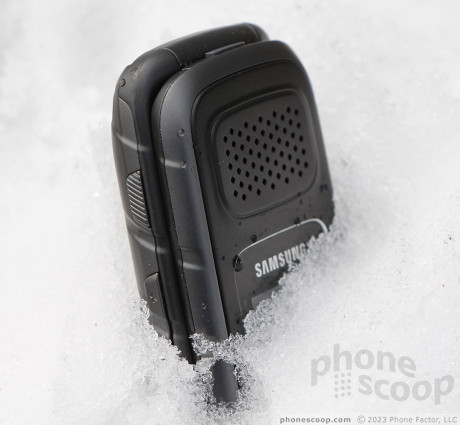
Samsung's rugged Rugby line for AT&T goes old-school with this early-oughts throw-back flip. The Rugby III may not be a svelte stunner, but it is a tough telephone.
Form
Is It Your Type
The Samsung Rugby III is a semi-rugged flip phone from AT&T that also offers push-to-talk capabilities. It's not crazy strong, but it is sturdy enough to survive the lesser perils of a somewhat-active lifestyle with few frills on the side.
Body
Using the Samsung Rugby III is like stepping into a time warp (it's just a jump to the left.) The design of this flip is right out of Samsung's design studio circa 2003. Pick any Samsung device from 10 years ago, add a thicker plastic shell, and there's the Rugby III (RIII) for you.
One of the drawbacks of fully rugged handsets is the sheer bulk needed to win all those impressive mil-spec certifications. The RIII sheds that bulk and is instead a smaller semi-rugged phone. The RIII uses a gray-on-black color scheme, and there are slanted stripes that run along the side edges. It's not vanilla, as far as flip phone design goes, but neither is it a hot fudge sundae.
I could easily grip the RIII in my hand. It has a comfortable size and will fit in pockets. At 0.87 inches (23mm) you won't forget it's in your jeans. The plastics are strong, but aren't as strong as the dense and rigid rubbers used on the most rugged devices. The quality of the materials is pleasing. There is no creaking plastic, there are no pliable surfaces, nor is there anything else to make the RIII feel cheap.
The front of the RIII houses a large speaker grill and the secondary screen. The speaker grill is the one aspect of the RIII's design that I just don't like. Samsung could have picked a more attractive grill. The secondary screen is used chiefly for notifications and serves as a clock. There are two buttons that run along the left side: a dedicated PTT key and the volume toggle. Both jut from the side of the RIII, making them impossible to miss with your thumb. Travel and feedback of these buttons is outstanding. They each present a satisfying "click" when pressed.
There is a dedicated speakerphone button on the RIII's right edge, in addition to the microUSB port. The speakerphone button is flush with the side surface, making it more difficult to find in a hurry. Travel is good, though. The microUSB port is hidden under a small hatch. The hatch is no trouble to peel back. One complaint: though I totally understand that the RIII is in no way a media device, the RIII doesn't have a headset jack, neither 2.5mm nor 3.5mm. Instead, it ships with an adapter that plugs into the microUSB port. (Remember what I said about the RIII's 2003 design? Yeah, Samsung brought forward some of its worst design choices with this adapter thing.)
The flip mechanism is spring-loaded, so the top half will jump once you open the flip about half way. The hinge is smooth, solid, and strong. It doesn't wiggle at all, and has good action. The top half is nearly all display, while the bottom half is where the business end of the RIII is.
The RIII has a navigation cluster and keypad that are typical for a feature phone. The d-pad is rectangular with rounded corners. This crucial element is hard to find with your thumb, however, because it is too flush with the rest of the phone. The lack of a defining edge to the d-pad means I often pressed the buttons adjacent to the d-pad rather than the d-pad itself. That said, the direction keys all have good travel and feedback.
The d-pad is encircled with a bevy of other controls. There are the standard two soft keys, plus dedicated Send and End keys. There are also dedicated buttons for GPS and multitasking, and a Back button wedged between the Send and End keys. All these buttons have identical travel and feedback that felt good. The number keys are flat, but have a small amount of shaping that helps your thumb figure out where it is on the keypad. The keypad is spacious and easy to use for dialing numbers or entering text.
The battery cover screws on to help keep water out. The screw requires a coin, and the battery cover itself really needs some prying to remove. Both the (full-sized) SIM card and memory card slots are located under the battery, which means no hot-swapping.
Performance
Screen
The RIII has two displays, a small, square one on the exterior for notifications, and the main one visible when the phone is open. The external display measures about 1.3 inches across the diagonal. It is a color display, and can be used with the camera for self-pics. Resolution is pretty much awful, as is brightness. It is just barely visible outdoors.
The main screen measures 2.4 inches across the diagonal and has 240 x 320 pixels. The pixel count works well with the size to create a display that looks good. It is bright, colorful, and the resolution is high enough for a device of this caliber. Yes, you can see individual pixels, but I expect that on a flip phone.
Signal
The RIII is a 3G phone; there's no LTE here. It doesn't use AT&T's fastest HSPA+, either; instead, it sticks to slower WCDMA. During my time testing it, the RIII was a signal-gathering champ. It maintained a strong connection to AT&T's network throughout my review period, and it never faltered. Every call went through on the first dial, it didn't miss any calls, and it didn't drop any calls. It even connected calls from the NJ vault (local supermarket), which is notorious for its poor signal strength.
Sound
The RIII is not a good voice phone. Everything about cellular and PTT calls was unacceptable to me. The quality is abysmal. Every conversation I had sounded like I was talking through a wall. Voices coming through the earpiece were muffled and scratchy, and the sound dropped out entirely far too often. Then there's the volume. With the volume set all the way up, conversations were difficult to hear in my quiet office. Outside in the real world, forget it. You can't hear anything. The speakerphone quality is worse than the earpiece, and though the volume is better, it introduces distortion. On the flip side of the coin, people with whom I conversed said they could hear me no problem, and that I sounded good to them. Ringers and alerts were loud enough, and the vibrate alert was strong.
Battery
The battery life of the RIII is excellent. We're talking days, not hours. I had no trouble getting three days of battery life from my review unit, with regular use of the phone and browser. You can easily get away with charging every other night.
Ruggedization
The RIII is rated to mil-spec 810G and IP67 for protection from water and dust ingress, as well as from humidity and shock. You can kick it around a fair amount without fear of killing it. It can take a short dunk in shallow water, as well as handle phone calls out in the rain. It's not like any of today's fragile, glass-laden smartphones. You can drop it, a lot, and it won't break.
Basics
Menus
The RIII has a standard feature phone menu system. There is a single home screen that shows signal/battery indicators, the time, incoming alerts, and provides access to the other menu screens. The left soft key option opens up a shortcut list of apps to which you can jump. The right option takes you to the main menu.
The main menu is a grid of icons, some of which are apps/services, and some of which are folders to yet more apps/services. It is organized about how you might expect, with features such as the browser, messaging, email, and GPS at the top level, and other items, such as apps and media content buried further down. The main menu can also be viewed as a list. All of the secondary menus are lists by default.
As with all feature phone menu systems, it requires a lot of futzing with the d-pad to navigate through the pages, lists, and folders. Speaking of the d-pad, the direction keys can be programmed with shortcuts to launch certain apps, such as the browser or messaging tools.
The one novel feature is the dedicated multitasking button. Pressing it from within any app opens a little dock at the bottom of the display, which provides access to the phone, messaging, browser, music, gaming, and downloaded apps. This task tool can also be used to "end all" running apps.
Customization options run the typical set. Owners can change the wallpaper, background and font colors, etc.
Bottom line, if you've ever used a feature phone before, you'll feel right at home.
Calls/Contacts
The "Enhanced PTT" service available on the RIII means it works as a walkie-talkie just like Sprint's DirectConnect devices do. The tools for setting up PTT contacts and calls are all straightforward and don't take any extra time to learn. The dedicated PTT button on the side of the RIII opens the PTT calling app and away you go.
The regular phone app is dead simple to use, as it should be. It supports speed dials and the call log tool can be used to save numbers to the address book, reply via SMS, set up blocked numbers and so on. In-call options include access to the address book, browser, SMS/email apps, and of course setting up a conference call.
The contact app is also bare-bones, but it works. Individual contact cards can hold reams of data, including multiple phone numbers, multiple email addresses, street address, work address, notes, and so on. AT&T customers can also choose to sync the RIII with their online contacts stored with AT&T, which makes transferring them from device-to-device a snap.
Messaging
The RIII is not truly meant to be a messaging phone. If you really want easy-to-use messaging features, pick a device with a keyboard or touch screen.
Both SMS and email are on board the RIII. SMS conversations are not threaded, which kills me, but it has a number of text templates and is otherwise easy to use. The email app supports a handful of the most popular services, but is slow and really only useful for reading, not composing, emails. It works, though navigating through your inbox is a clunky exercise.
Facebook, MySpace, and Twitter are available through AT&T's SocialNet app. It uses a carousel design to import feeds from these various social networks, in addition to several news sources. SocialNet is best thought of as a tool for posting quick status updates and perhaps responding to direct messages. It doesn't come close to offering the full functionality of any of these social networks. You're better off using the browser if you want to do more than peruse some text.
Extras
Media
The RIII includes a rudimentary MP3 player as well as AT&T Radio. The MP3 player can handle sideloaded content, as well as anything purchased through the AT&T Music Store. Avoid the Music Store. Navigating it is a nightmare, the selection stinks, and it mostly offers ringtones. Also, everything is overpriced. The AT&T Radio app requires a $5 monthly fee to use, and streams music via the data network. It's a shame there isn't a real FM radio on the RIII. There is also an app for playing video, but it is severely limited. It can handle what you've recorded on the RIII and the content you download (i.e., pay for) from AT&T's video content store. It would not work with my sideloaded content.
Camera
The camera is an incredibly simple piece of software. A long press of the speakerphone button on the side of the RIII will launch the camera, or you can set a d-pad shortcut if you wish. The camera opens somewhat quickly.
The camera offers a small window through which to compose your photos. The d-pad serves as the shutter button. In the options menu, users can set shooting modes (single, panorama, continuous, etc.), compensate for low light, adjust white balance, add effects, and so on. Most of the essentials are present.
Surprisingly, the camera focuses quickly and fires off the shutter speedily. Images are previewed through a review screen, though this can be turned off.
Photos
I had low expectations for the RIII's 3-megapixel camera, and it managed to meet those expectations. Focus was generally soft in all images, and most indoor shots showed more grain than I care to see. White balance and exposure accuracy were inconsistent. With no flash on the RIII, you can write off the ability to take images at night or in dark places such as restaurants. The RIII's images turn out best when you're outside under a bright sky.
Video
The camcorder is limited to 320 x 240 pixels. In terms of quality, videos are passable at best. They are smeared with grain, pixels and artifacts are visible all over the place, and again focus is hardly present at all. The RIII may serve in a pinch to record a basic scene, but not much more than that.

MPEG-4 format (viewable with QuickTime)
Gallery
The gallery offers a surprising number of options for interacting with your photos. Images are displayed in either grid or list form. They can be shared via message or Bluetooth, as well as set as the wallpaper or contact image. Editing features include crop, rotate, resize, white balance & brightness adjustment, as well as frames, clip art, effects, and so on. Heck, the RIII has more features than some smartphones I can think of.
Apps
The RIII can run Java-based apps, which are available from AT&T's feature phone app store. The app store, which is accessed through the browser, is a crummy place. Too many of the apps require monthly subscriptions, and run poorly on the phone. Some of the apps preinstalled include AT&T Navigator and Family Map, AT&T Radio, AT&T Social Net, Maps, Mobile Email, Weather, myAT&T, and Wikipedia. There's very little room in the RIII's memory for additional apps, but apps can run from the microSD card.
Browser
The RIII uses the NetFront Access 4.2 browser. As far as feature phone browsers go, it works well enough. The controls are straightforward to use and it does an acceptable job of rendering mobile-optimized web sites. Full-HTML web sites generally don't look good, as they are all strung out in a single long column. Web pages often take longer than 10 seconds to load, even with the best network connection.
Bluetooth
The RIII can be used with mono and stereo wireless headphones, and the Bluetooth can be used to push files around. I didn't experience any trouble pairing it with headsets or my car. Call quality through a mono Bluetooth headset was barely acceptable.
Clock
The RIII's external display is what you'll use to check the time. A long press of the PTT button turns the external screen on. The clock is made of red digits on a black background. It looks like the shot clock you'd see at a basketball game. it is easy to read indoors, but not outdoors.
GPS
The RIII has a dedicated GPS button. It launches AT&T Navigator, which costs $10 per month to use. This button cannot be rewired to launch anything else. That's kind of annoying. The GPS radio of the RIII itself works well at locating the device, but AT&T Navigator was slow to operate.
Wrap-Up
The Rugby III is a jack of all trades, but master of none. If you're looking for a basic handset that can withstand some abuse, it manages to accomplish that with ease. Nearly every other feature, however, earns a "B" at best.
The biggest detractor is call quality. It's simply not good enough, not for a device that is mostly likely to be used as a dedicated voice phone. Further, as a PTT device, the speakerphone should be incredibly loud. It isn't, not by a long shot. Battery life is stellar, though. The messaging and media features are on par with other devices in this class, which is to say they are rudimentary at most.
For AT&T customers who can't switch to Sprint and need a PTT-capable device, the Samsung Rugby III is serviceable, but not much more than that.
Comments
AT&T PTT?
I tried AT&T's "EPTT" in a local AT&T store, coincidentally in an area with no LTE service yet, so it was operating on the 3G AT&T network. The performance could only be described as "push-to-wait...and then some". Initial PTT "setup times" on four different phones they demonstrated for me were on the order of ten seconds to establish first connection. When you're accustomed to Nex...
(continues)
Compared to the Rugby II?
Jellz said:
I don't know if you've used it, but would you say it's a step up or down from the Rugby II (since it's still available and half the price)?
Sorry, I have only used the one briefly during the in-store dem...
(continues)


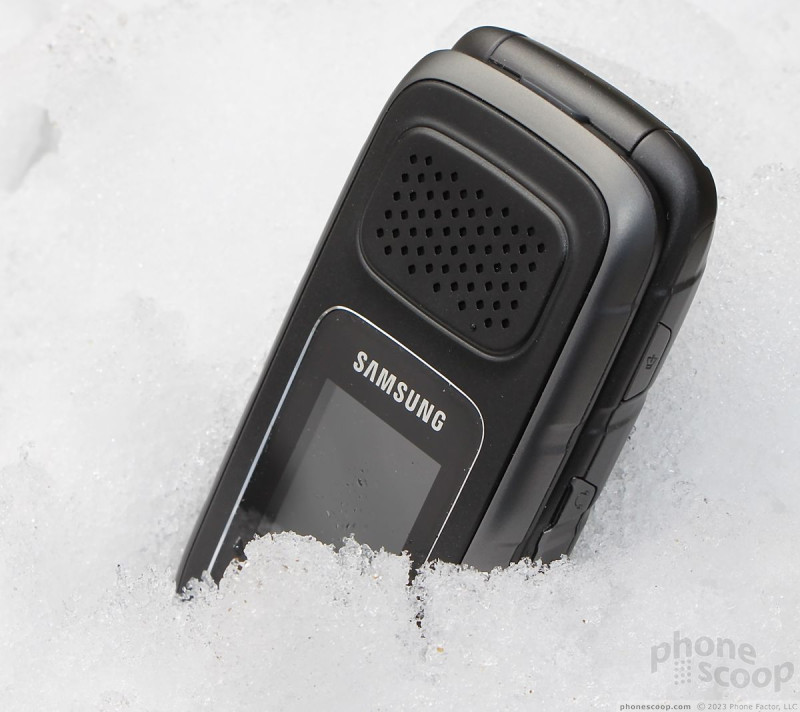



























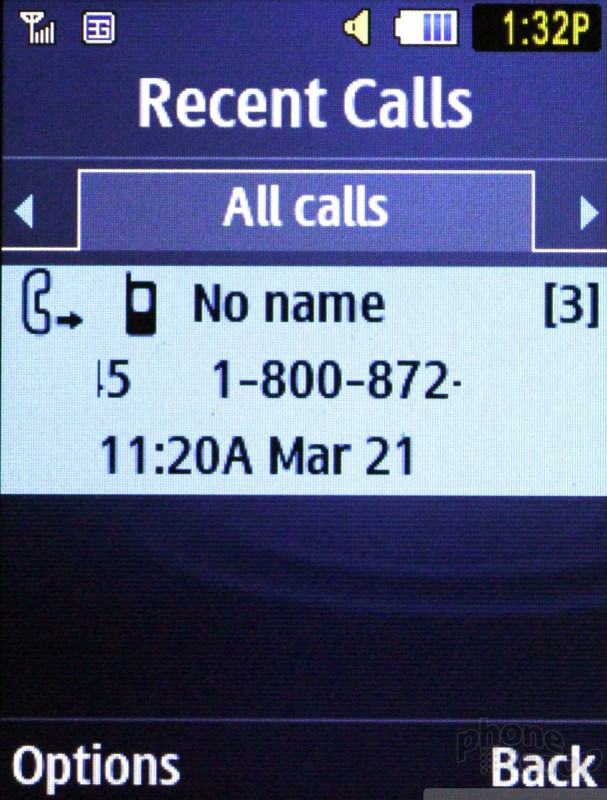







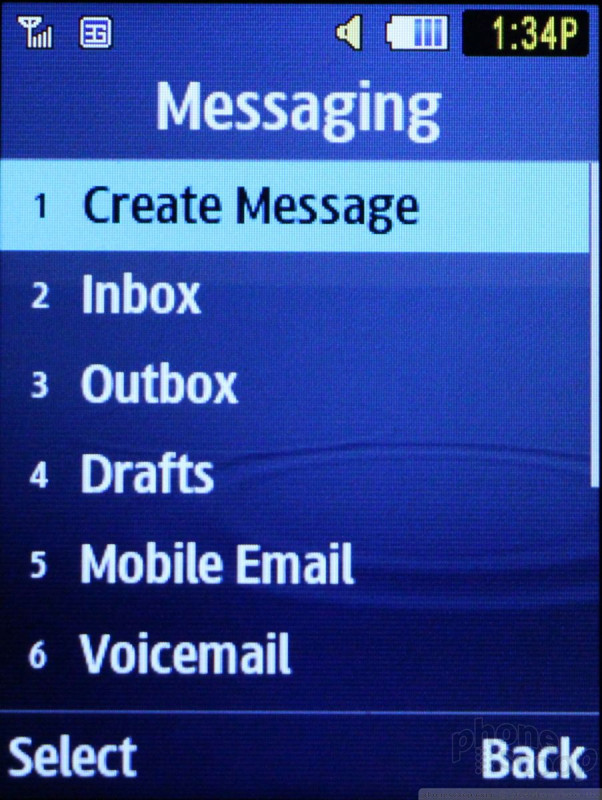










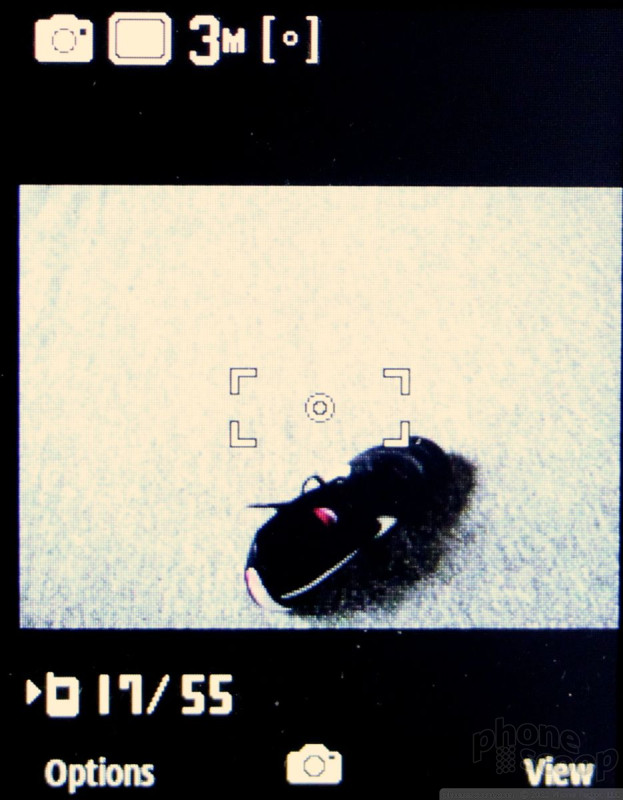

















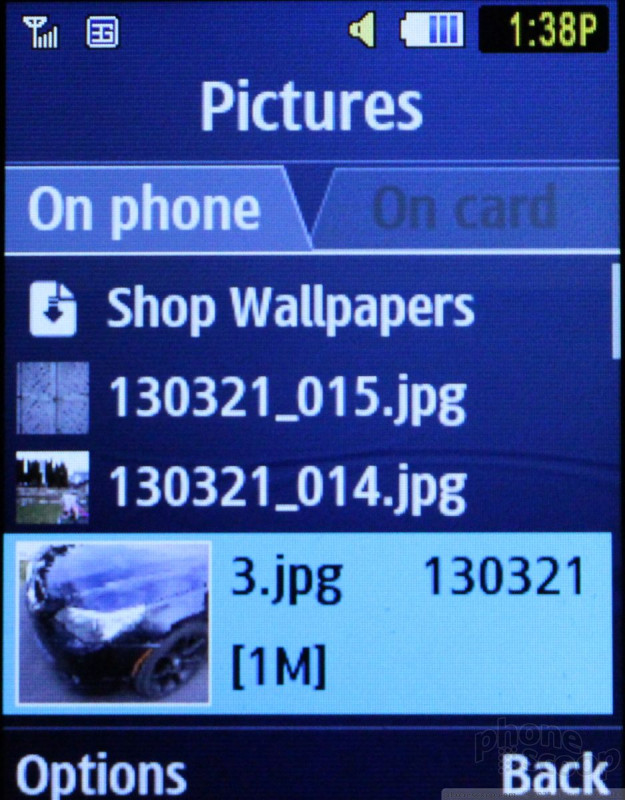




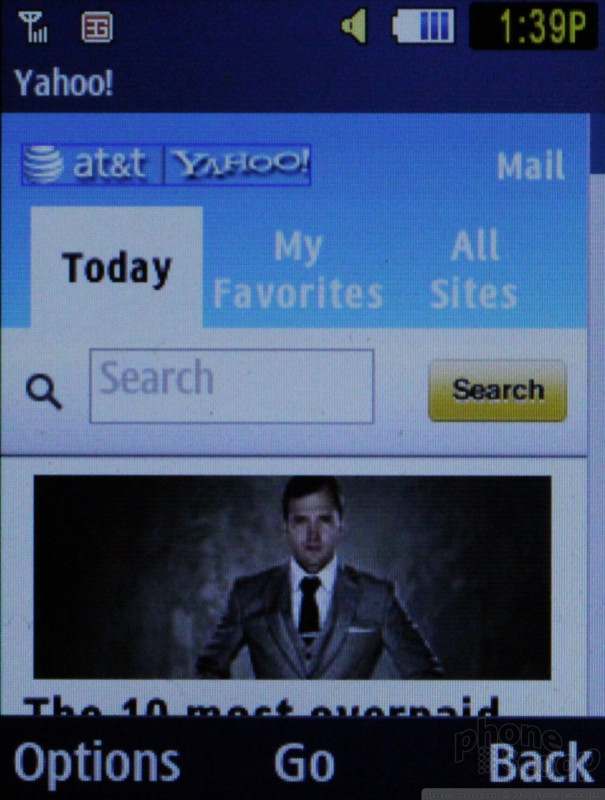




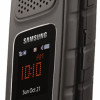 Samsung Rugby III Hits AT&T December 14 for $99
Samsung Rugby III Hits AT&T December 14 for $99
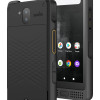 Verizon Continues Updating Rugged Lineup with Sonim XP10
Verizon Continues Updating Rugged Lineup with Sonim XP10
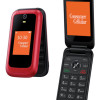 Consumer Cellular Launches Flip Phone with eSIM
Consumer Cellular Launches Flip Phone with eSIM
 Samsung Launches Galaxy Watch for Kids
Samsung Launches Galaxy Watch for Kids
 Google Makes Useful Parental Controls Part of Android
Google Makes Useful Parental Controls Part of Android
 Samsung Rugby III
Samsung Rugby III







